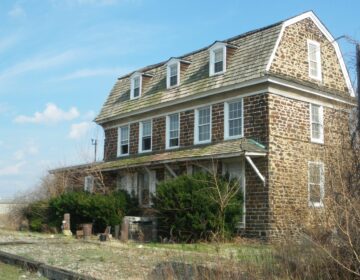Commentary: Are we getting what we paid for in Asbury Park Schools?

Local news agencies recently reported that Asbury Park High School (Monmouth County, New Jersey) has a 49 percent graduation rate. Only 2 percent of the senior class scored higher than 1550 on their SAT’s, a measure of college and career readiness. This systemic failure doesn’t start in high school: 87 percent of third graders can’t read at grade level and 47 percent fail the basic skills test in math.
All this for $30,485 per student per year, an amount so high that New Jersey Gov. Christie, during his gubernatorial campaigns, used it as a poster child for school spending profligacy. Where does that money come from and where does it go?
The answers are in Asbury Park’s school budget. Like every district budget in the state, it is online at the Department of Education’s website, displayed in “user-friendly” format. For context, remember that Asbury Park is an “Abbott” district, one of 31 in the state, and is thus eligible for extra state aid.
This progressive aid allocation stems from a series of State Supreme Court rulings that overturned N.J.’s system of forcing all towns, regardless of wealth, to rely on local property taxes to pay for schools. The 21Abbott rulings affirm every child’s constitutional right to a “thorough and efficient” education system and also require the state to provide compensatory services for poor children. (The Abbott decisions were technically supplanted by the 2008 School Funding Reform Act, which replaces the Abbott system with compensatory aid to all needy N.J. students, regardless of district of residence. However, the State’s never been able to meet the monetary demands of the formula and so we’ve reverted to an Abbott-ish state aid distribution system.)
Now to the budget, which begins with school enrollment. Asbury Park’s four schools enroll 1,992 students, pre-kindergarten through 12th grade. Another 379 students attend other public schools, including Hope Charter School. Another 100 students are placed, also at district expense, in private special education schools or other private placements. Nineteen are in juvenile detention centers.
Asbury Park’s total operating budget for last year was $69,855,131. About 82 percent of that total, $55,407,010, came in the form of state aid. Local tax levies contributed 8.4 percent, or $6,505,623, a low margin that reflects the city’s impoverishment: according to the 2010 Census, the median family income in Asbury Park is only $27,000, compared to a state average of $70K, and 31 percent of families live below the poverty line.
For comparison’s sake, Holmdel Township Public Schools (Monmouth County, New Jersey), one of the state’s wealthiest districts, has an operating budget of about $55 million for its 3,000 students. The district raises $49 million from local levies and receives about $2 million in state aid. The average annual cost per pupil is just under $16,000, which reflects the less costly needs of children in Holmdel.
For some middle ground, Freehold Boro Public Schools, also in Monmouth, raises about half of its budget from local taxes and the other half from state aid. Average cost per pupil in Freehold Boro is only $11,462 because the district has no high school (and board members there would say, appropriately, that it’s under-funded).
There are many categories of state and federal aid – children with disabilities, English Language Learners, economically-disadvantaged students — but N.J. school state aid mostly comes through two streams: Equalization Aid and Adjustment Aid.
Equalization Aid is calculated by algorithms that determine how much money per year the district needs to provide a “thorough and efficient” education system. Then the state calculates how much money the district can reasonably raise through local property taxes. The difference between those two numbers is Equalization Aid, although the state’s fiscal health is factored in too. Currently the state budget allocates about $6 billion per year in Equalization Aid
In 2012-2013 Asbury Park Public Schools received $28,163,553 in Equalization Aid. For comparison, Holmdel got none and Freehold Boro got $8,115,888. (Every district, regardless of wealth, receives state and federal grants for children with disabilities, English Language Learners, transportation costs, etc.)
Asbury Park also receives $24,422,872 in Adjustment Aid, a budget line that was created by the Legislature to help districts “adjust” to less state aid rendered by the School Funding Reform Act. Most of that money goes to Abbott districts. Neither Holmdel nor Freehold receives Adjustment Aid.
That’s where the money comes from. Where does it go? Like all school districts, spending is driven by payroll and benefits costs, 67 percent of the total budget in Asbury Park. Another 11 percent goes to contracted services, 6.9 percent is allocated for special education students attending private schools, 7.8 percent is allocated for charter school tuition, and 5 percent goes for supplies.
So how do we get to $30,000 per student per year? Consider the peculiar and dysfunctional nature of Asbury Park Public Schools. Inefficiency is rampant. Superintendents play musical chairs. The district has one administrator for every 90 students and a teacher for every seven. Enrollment drops every year: Superintendent Robert Mahon told the Asbury Park Press that “he believes most parents pull their children out of the district because of violence and high drop-out rates.”
Back in 2007 when the state brought in a fiscal monitor because of a variety of over-expenditures and accounting irregularities, the board president told the New York Times that “the district that has been in decline for more than 30 years.” Seven years later, the decline continues, despite the investment of $30,000 per student per year. There are no algorithms for loss, but here it’s mostly borne by Asbury Park Public Schools’ children and families.
______________________________________________
Laura Waters is vice president of the Lawrence Township School Board in Mercer County. She also writes about New Jersey’s public education on her blog NJ Left Behind. Follow her on Twitter @NJLeftbehind.
WHYY is your source for fact-based, in-depth journalism and information. As a nonprofit organization, we rely on financial support from readers like you. Please give today.





